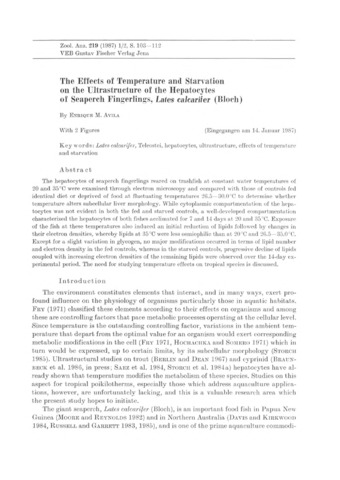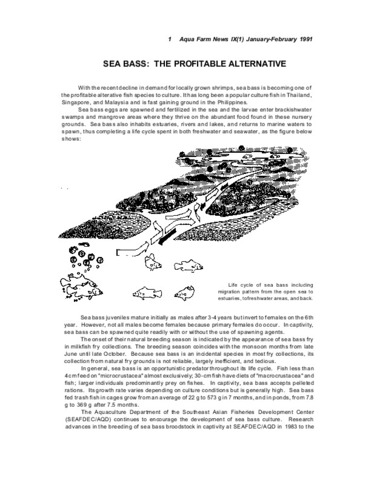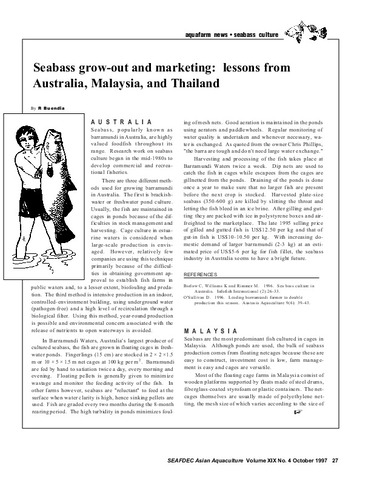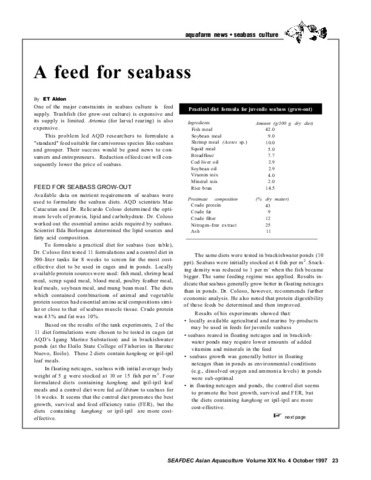The effects of temperature and starvation on the ultrastructure of the hepatocytes of seaperch fingerlings, Lates calcarifer (Bloch).
- Global styles
- MLA
- Vancouver
- Elsevier - Harvard
- APA
- Help

View/
Date
1987Author
Page views
1,971ASFA keyword
AGROVOC keyword
Taxonomic term
Metadata
Show full item record
Share
Abstract
The hepatocytes of seaperch fingerlings reared on trashfish at constant water temperatures of 20 and 35°C were examined through electron microscopy and compared with those of controls fed identical diet or deprived of food at fluctuating temperatures 26.5-30°C to determine whether temperature alters subcellular liver morphology. While cytoplasmic compartmentation of the hepatocytes was not evident in both the fed and starved controls, a well-developed compartmentation characterized the hepatocytes of both fishes acclimated for 7 and 14 days at 20 and 35°C. Exposure of the fish at these temperatures also induced an initial reduction of lipids followed by changes in their electron densities, whereby lipids at 35°C were less osmiophilic than at 20°C and 26.5-35.0°C. Except for a slight variation in glycogen, no major modifications occurred in terms of lipid number and electron density in the fed controls, whereas in the starved controls, progressive decline of lipids coupled with increasing electron densities of the remaining lipids were observed over the 14-day experimental period. The need for studying temperature effects on tropical species is discussed.
Suggested Citation
Avila, E. M. (1987). The effects of temperature and starvation on the ultrastructure of the hepatocytes of seaperch fingerlings, Lates calcarifer (Bloch). Zoologischer Anzeiger , 219(1-2), 103-112. http://hdl.handle.net/10862/1263
Type
ArticleISSN
0044-5231Collections
- Journal Articles [1258]
Related items
Showing items related by title, author, creator and subject.
-
Sea bass: The profitable alternative
Southeast Asian Fisheries Development Center, Aquaculture Department (Aquaculture Department, Southeast Asian Fisheries Development Center, 1991) -
Seabass grow-out and marketing: lessons from Australia, Malaysia, and Thailand
Buendia, Romeo (Aquaculture Department, Southeast Asian Fisheries Development Center, 1997) -
A feed for seabass
Aldon, E. T. (Aquaculture Department, Southeast Asian Fisheries Development Center, 1997)One of the major constraints in seabass (Lates calcarifer) culture is feed supply. Details are given of work conducted at AQD regarding the formulation of a 'standard' feed suitable for carnivorous species like the seabass ...





